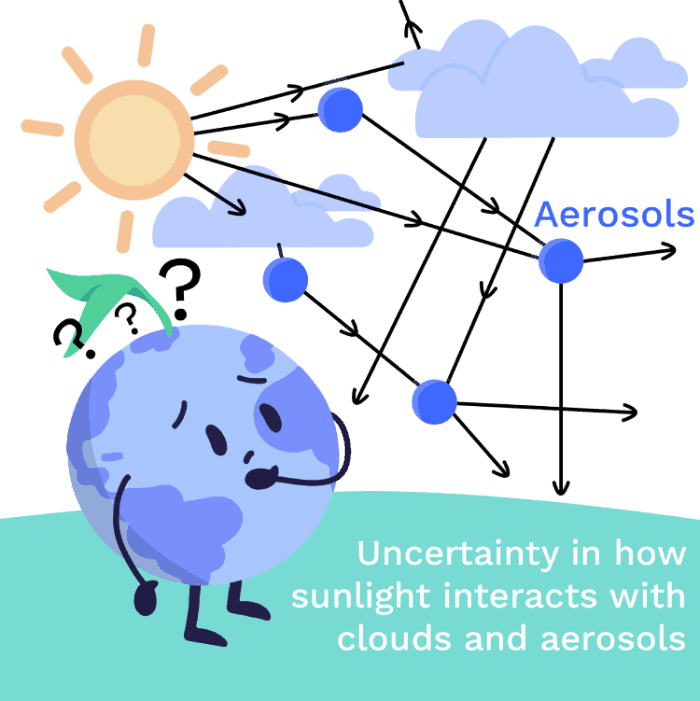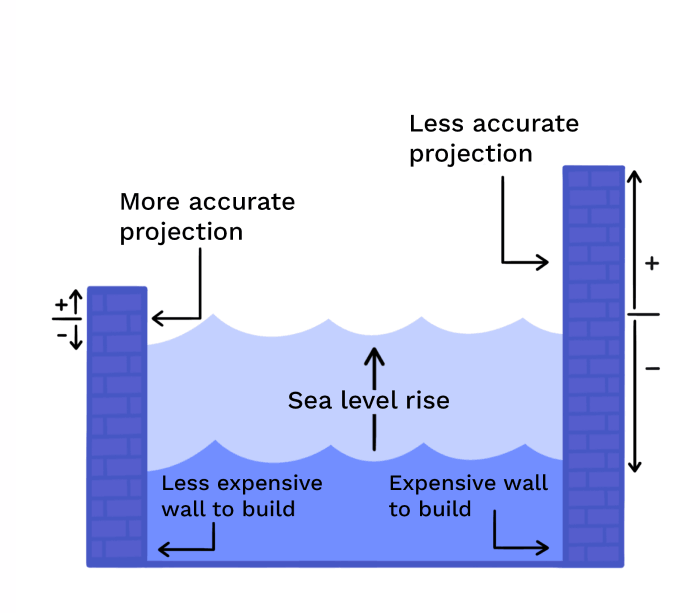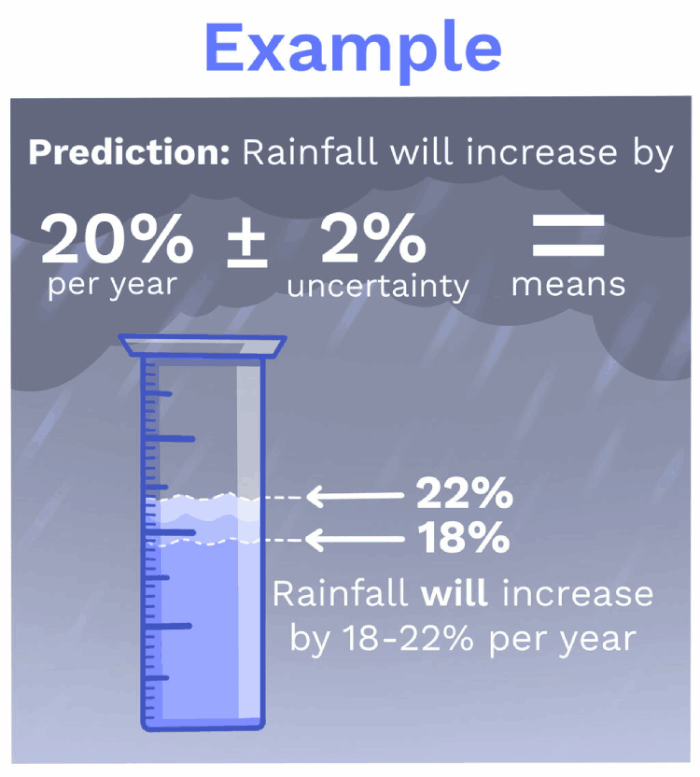Open Problems
6 minute read
Updated on: 29 Apr 2021
We’ve discussed a lot in this course! Let’s take a closer look at the key problems and solutions surrounding climate predictions.

Uncertainty in how sunlight interacts with clouds and aerosols
Problem 1: Include some more complex processes in climate models
What the world needs to solve this problem:
brain
money
awareness
Description
These processes include the effect of aerosols (small particles which can be found in the atmosphere)
and their interaction with clouds
as well as the process which control natural sinks and sources of greenhouse gases
. This means even if the computers used for modelling are extremely powerful, the model will have some errors
. For example, differences in how different models deal with clouds cause significant variation in prediction models for average global temperature
.
Click to learn more:
Problem 2: Limited and/or low quality observations affect the quality of climate model predictions.
What the world needs to solve this problem:
brain
money
awareness
Description
Currently scientists are still struggling with a lack of, or low quality
, data in many areas including measurements of rainfall in Africa and South America
, the amount of CO₂ and heat absorbed by the deep ocean
and the interaction between oceans and ice sheets
. This affects our ability to estimate trends in the occurrence of droughts
, to predict the amount of sea level rise
, and to forecast changes in Antarctic ice sheets
. Perhaps more importantly, it makes it hard to validate our models! Funding for research would allow scientists to understand more about climate systems, by making sure there is enough data (by taking measurements more often)
and that the quality of the data improves
.
Click to learn more:

Accurate prediction means lower costs
Problem 3: Accuracy of climate model predictions on small scales could still be improved.
What the world needs to solve this problem:
brain
money
awareness
Description
Climate-change risks vary locally, so different communities will be affected in different ways. Accurate local predictions save money by enabling governments to prepare for the effects of climate change without taking unnecessary precautions
. However, due to limitations in available computer power
, we cannot construct global climate models with sufficient accuracy on local scales. Instead we can only construct local models that still need to rely on the input from coarser scale climate models
.
Click to learn more:

Uncertainty is certain!
Problem 4: Scientific terms about climate predictions can be confusing, so people don’t act.
What the world needs to solve this problem:
brain
money
awareness
Description
Despite the huge amount of scientific evidence and agreement around climate change, many people are still unconvinced because they do not understand key scientific terms
. The best example of this is the word ‘uncertainty’. To non-scientists this word usually means ‘things we don’t know’, but to scientists it shows how well they know something
. To solve this, scientists must work harder to communicate their research clearly to the public, making sure it is relevant
and understandable
. Work from people in other professions, like teachers and journalists, will also help
. We - ClimateScience - are trying to do just this! :)
Click to learn more:
Problem 5: Tipping points need to be taken seriously.
What the world needs to solve this problem:
brain
money
awareness
Description
It is thought that if countries stick to their promises to reduce emissions, it is likely that we will reach 3°C of global warming. This could be very dangerous because many scientists argue that we should stay below 2°C global warming to keep safely away from crossing any tipping points
. Therefore, it’s no surprise that many scientists are asking governments to consider the risks of crossing tipping points more seriously in climate policies
. By improving climate models, the risk of tipping points, and the feedbacks which cause them, could be predicted with more confidence
. Early warning signals could also be detected
, which would encourage people to take tipping points more seriously
.
Click to learn more: